One of the most common mistakes I see in the gym is people thinking the leg press is only for quads.
The truth is, you’re missing out on one of the most potent and safe glute-building exercises available.
The secret isn’t magic; it’s biomechanics. By mastering your setup with the right foot placement and form, you can shift the mechanical load from your knees to your hips, forcing your glutes to activate.
Forget the guesswork—this guide provides a proven, step-by-step blueprint to engage your glutes on every single rep.
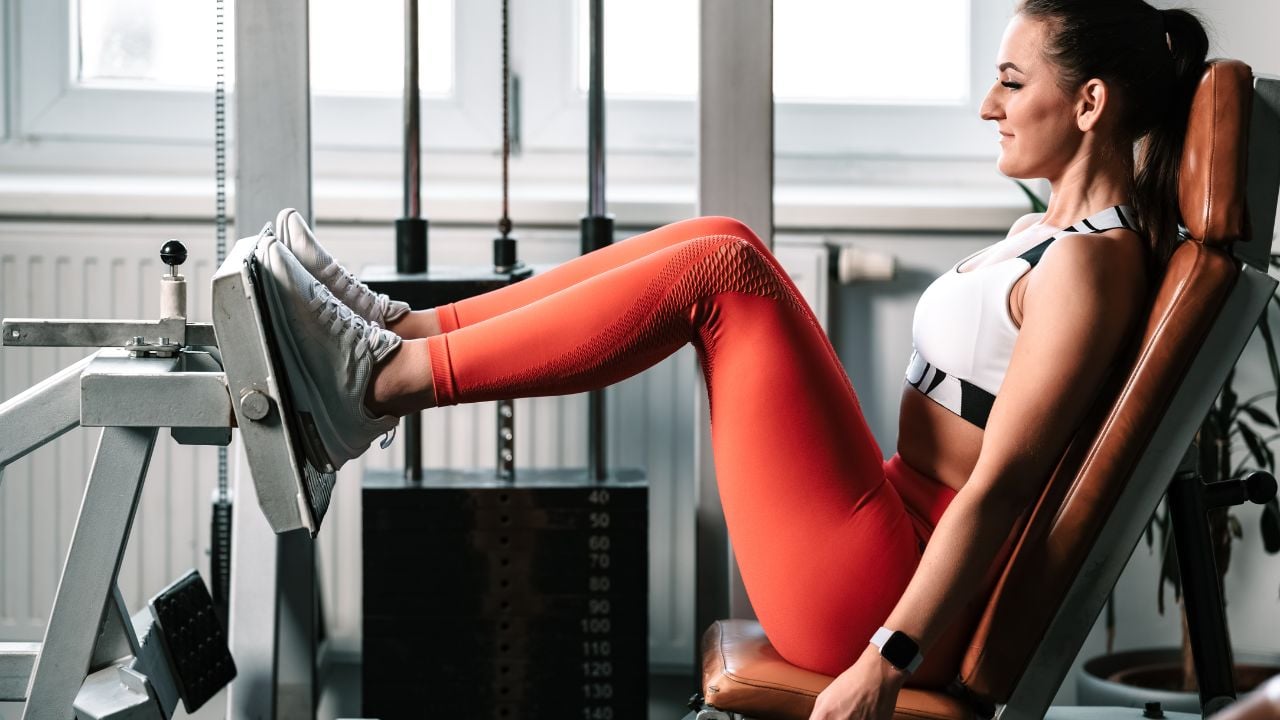
- Which Leg Press Machine Should You Use to Train Glutes?
- Muscles Worked During the Standard Leg Press
- 5 Ways to Do Glute-Focused Leg Press
- 1. High Foot Placement: The Golden Rule
- 2. Adopt a Wider Stance
- 3. Point Your Toes Out Slightly
- 4. Go Deep (With Good Form)
- 5. Adjust the Seat for Deeper Hip Flexion (If Possible)
- Leg Press for Glutes Form and Tip
- Single Leg Press for Glutes
- How to Do It
- FAQs
- Where to Put Feet on Leg Press for Glutes
- Does Leg Press Work Glutes
- References
Which Leg Press Machine Should You Use to Train Glutes?
The leg press machine is a staple in nearly every gym, but not all leg presses are created equal. Understanding the different types—and how they affect your muscles. It helps you choose the right machine for your goals and work around any injuries or limitations you might have.
There are three main types you’ll spot in most gyms.
- 45-Degree Leg Press: This is the classic, plate-loaded beast you see serious lifters using. You sit in a low, angled seat and push a weighted sled up and away from you. Because it allows you to load a significant amount of weight, it’s a top-tier choice for serious glute growth.
- Horizontal Leg Press: This is typically a pin-loaded machine where you sit upright and press the platform horizontally. The excellent back support makes it very beginner-friendly and great for focusing on a controlled mind-muscle connection without worrying about stability.
- Vertical Leg Press: An old-school and less common machine where you lie flat on your back and press the weight straight up. It keeps constant tension on the muscles but can be awkward to get into.
We’ll focus our techniques on the more common 45-degree and horizontal presses.
Muscles Worked During the Standard Leg Press
The leg press is a versatile exercise that engages multiple muscles in the lower body.
- Primary Movers: The Quadriceps. These four large muscles on the front of your thigh are perfectly positioned to be the main force behind straightening your knee, so they do most of the work.
- Secondary Movers: Glutes & Hamstrings. They work to extend your hips, but in a standard setup, they’re more like backup singers than the lead vocalist.
- Stabilizers: Your core, lower back (erector spinae), and hip adductors/abductors all fire to keep your body stable and your knees aligned during the movement.
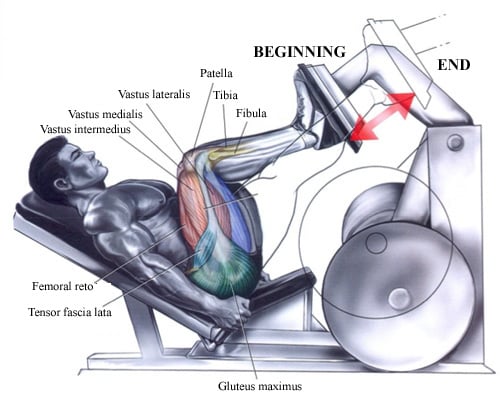
5 Ways to Do Glute-Focused Leg Press
Let’s break down five easy adjustments to prioritise those buns and help you sculpt stronger, shapelier glutes without overworking your thighs.
1. High Foot Placement: The Golden Rule
This is the single most important change you will make. If you only remember one thing from this article, let it be this.
- Instead of placing your feet in the centre of the platform, move them up towards the top edge.
- Placing your feet high fundamentally changes the mechanics of the press. It forces you to bend more at your hips and less at your knees. This increased hip flexion puts a deep stretch on your glutes at the bottom of the rep, essentially pre-loading them to do the majority of the work on the way up. It’s the ultimate hack for activating your glutes.
- A systematic study analysed muscle activation during the leg press and confirmed that a high foot placement significantly boosts the work done by the gluteus maximus.
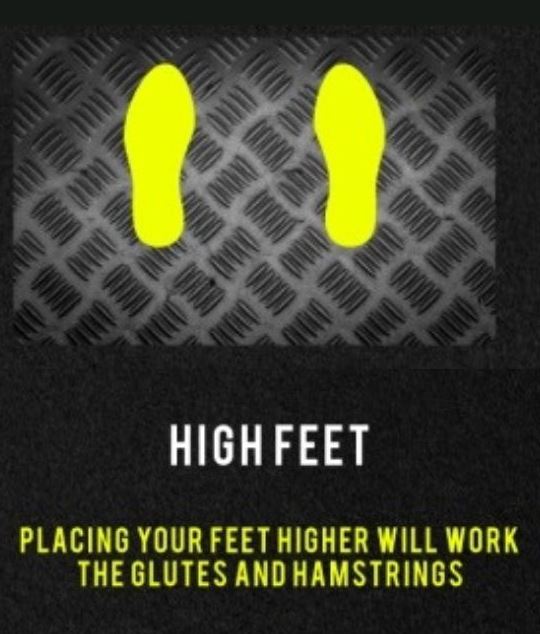
2. Adopt a Wider Stance
Now that your feet are high, let’s adjust their width.
- Place your feet a few inches wider than your usual shoulder-width stance.
- A wider stance engages your hip abductors—specifically, the gluteus medius and minimus in the movement. These are the muscles on the side of your hips. This simple tweak helps you build your glutes not just from back to front, but also from side to side.
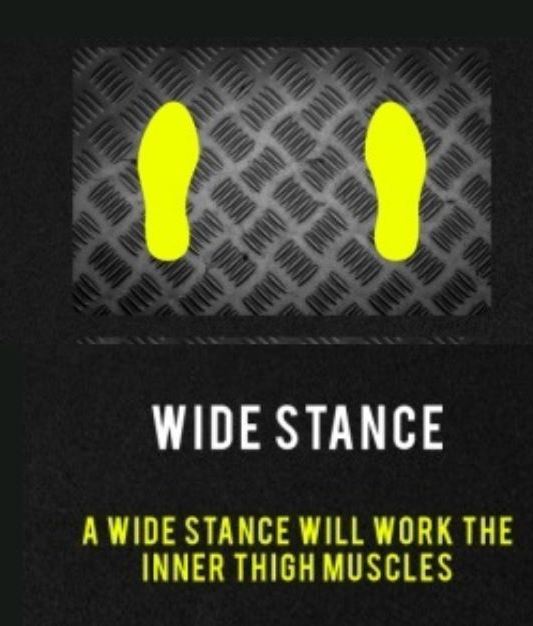
3. Point Your Toes Out Slightly
This is a small, subtle adjustment that makes a big difference.
- Angle your toes slightly outward, at a degree angle somewhere between 15 and 30 degrees. Let them follow the natural path of your knees.
- Your glute fibres aren’t just responsible for pushing your hips forward; they also help rotate your leg externally.
- By pointing your toes out, you align the movement with this natural function. It puts the gluteus maximus in a better position to contract powerfully and can often feel more comfortable on your hips.
4. Go Deep (With Good Form)
You can have the perfect foot setup, but if you only do shallow half-reps, your quads will still do all the work.
- Control the weight as you lower it until your thighs are at or below a 90-degree angle to your shins. Go as deep as you can without your lower back rounding or your tailbone lifting off the seat pad.
- The real glute-building magic happens in the bottom portion of the rep. This is where hip flexion is at its peak, and your glutes are stretched to their maximum.
5. Adjust the Seat for Deeper Hip Flexion (If Possible)
This last tip depends on your machine, but it’s a great option if you have it.
- On many seated or 45-degree leg press machines, the back pad can be adjusted. Set it to its most upright position.
- Why it works: Sitting more upright closes the angle between your torso and your thighs before you even start the movement. This puts you in a position of deeper hip flexion from the get-go, forcing your glutes to engage right from the very first inch of the press.
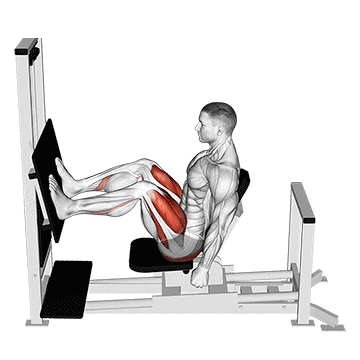
Leg Press for Glutes Form and Tip
- Position feet high on the platform, shoulder-width apart, and slightly turned outward to target glutes effectively.
- Keep your back flat against the seat and avoid arching or rounding.
- Lower the weight until your knees are bent at a 90-degree angle or slightly deeper.
- Focus on driving the weight through your heels, not just your toes. This directly engages your glutes.
- Prioritise hip extension by pushing the platform away from your body using your glutes. Avoid locking out your knees at the top of the movement.
- Brace your core as if you’re about to be punched in the stomach to stabilize your body and prevent hyperextension.
- At the top of each rep, squeeze your glutes hard for an extra activation boost.
- Perform each repetition with a controlled tempo. Emphasise the eccentric (lowering) phase to maximise muscle activation.
- Keep your shoulders relaxed and down; don’t shrug them up towards your ears.
- Inhale as you lower the weight and exhale as you push the weight back up. Maintain steady breathing throughout the exercise.
- Add single-leg presses! Isolating each leg strengthens them individually and challenges your core stability, making your glutes work even harder.
Single Leg Press for Glutes
Once you’ve mastered the two-legged version, the single-leg press is one of the best exercises you can do for isolating and developing your glutes.
This move makes your hip stabilisers (like the gluteus medius) work harder, helping build the “side glute” and fix strength imbalances between your legs.
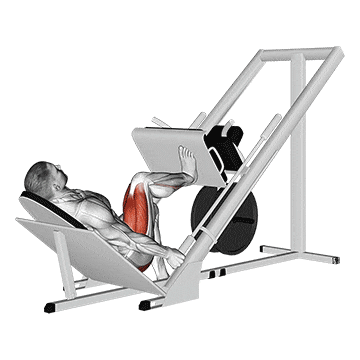
How to Do It
- Adjust the seat height and backrest for comfort and stability.
- Place one foot securely on the platform, toes slightly outward.
- Keep the other leg off the ground, maintaining good posture.
- Hold on to the handles or grips for stability.
- Push the platform away with control, focusing on feeling your glute working.
- Slowly lower the platform back to the starting position.
- Complete the desired repetitions on one leg before switching to the other.
- Ensure equal effort and range of motion on both sides to prevent muscle imbalances.
FAQs
Where to Put Feet on Leg Press for Glutes
For optimal glute activation during leg press, place your feet high on the platform, shoulder-width apart, and slightly turned outward. This position helps target the glutes effectively.
Does Leg Press Work Glutes
Yes, the leg press is an effective exercise for targeting the glutes, especially when performed with proper form and technique. The glutes play a significant role in hip extension, which is a primary movement during the leg press.
By pushing the weighted platform away from the body, the glute muscles are activated to extend the hips, resulting in the strengthening and toning of the glutes.
Additionally, variations such as high foot placement and single-leg presses can further isolate and engage the glute muscles during the leg press exercise.
References
- Martín-Fuentes I, Oliva-Lozano JM, Muyor JM. Evaluation of the Lower Limb Muscles’ Electromyographic Activity during the Leg Press Exercise and Its Variants: A Systematic Review. Int J Environ Res Public Health. 2020 Jun 27;17(13):4626. doi: 10.3390/ijerph17134626. PMID: 32605065; PMCID: PMC7369968.
- Da Silva EM, Brentano MA, Cadore EL, De Almeida AP, Kruel LF. Analysis of muscle activation during different leg press exercises at submaximum effort levels. J Strength Cond Res. 2008 Jul;22(4):1059-65. doi: 10.1519/JSC.0b013e3181739445. PMID: 18545207.

Manish is a NASM-certified fitness and nutrition coach with over 10 years of experience in weight lifting and fat loss fitness coaching. He specializes in gym-based training and has a lot of knowledge about exercise, lifting technique, biomechanics, and more.
Through “Fit Life Regime,” he generously shares the insights he’s gained over a decade in the field. His goal is to equip others with the knowledge to start their own fitness journey.
